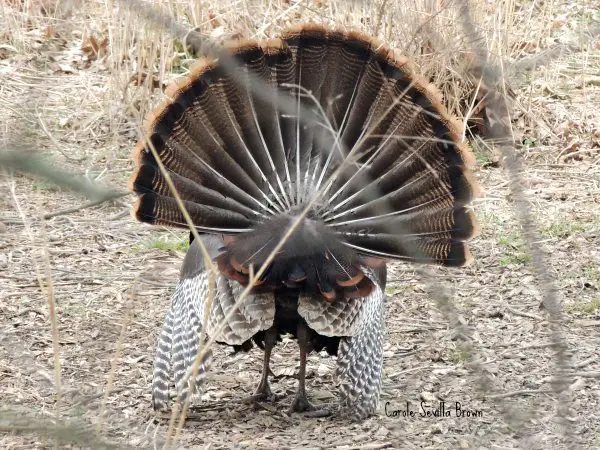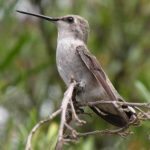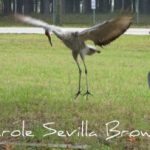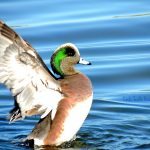The Wild Turkey is a very different creature than its factory farmed cousin. You can see them in forested areas with interspersed clearings, and even attract them to your wildlife garden.
It’s the time of year when we’re in search of the perfect turkey to grace our Thanksgiving Day table. A time when family and friends gather round to celebrate all that we are grateful for.
These birds with overplump breasts who are raised in cramped conditions at factory farms can barely fly because they’ve been bred to have giant breasts so they will quickly fly from your grocery store freezer. I like to avoid all factory farmed turkeys and support my local farmers who consciously choose to raise their turkeys in much more humane conditions!
While I greatly enjoy Thanksgiving dinner with my family, I am always in awe when I get to catch a glimpse of the beautiful Wild Turkey as I meander through the woods.
During most of the 20th century, Wild Turkeys were extirpated from many areas, and almost extinct in others due to habitat loss. But due to an ambitious relocation program, the Wild Turkey can now be found in large numbers in every state in the US except Alaska.
Even though these birds are quite large, they are quite well camouflaged and often difficult to see.
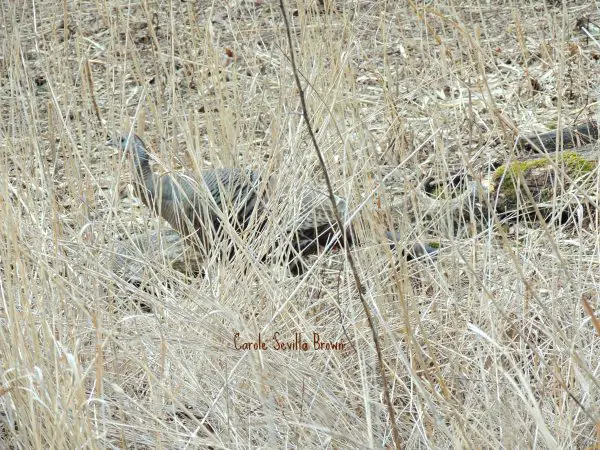
It’s easy to tell the Wild Turkey males and females apart. For one, the male likes to “strut his stuff” by walking around showing off his magnificent tail, and also lowering his wings so that they almost drag through the dirt.
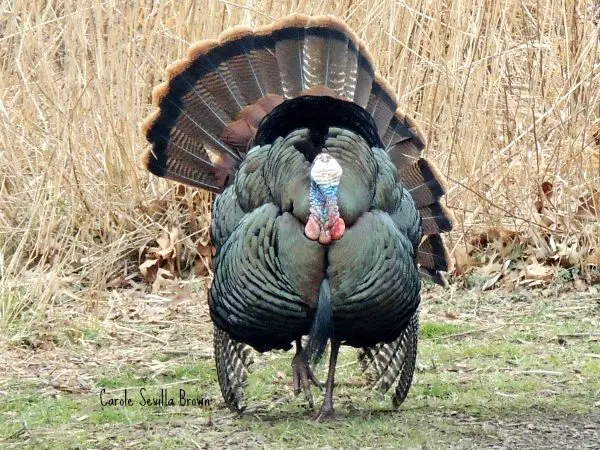
Also, male Wild Turkeys have a “beard” (notice the long feathers hanging from this Turkey’s chest). And they also have “spurs” that grow about 2 inches long. These spiny protuberances are used for defense and to establish dominance over their female harem.
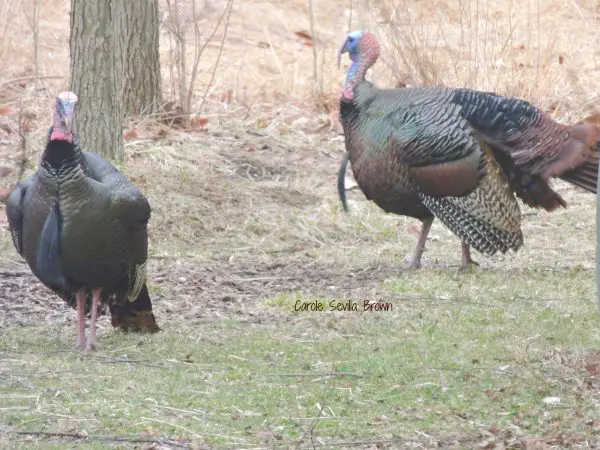
Wild Turkey Male and Female
And now take a look at the female Wild Turkey:
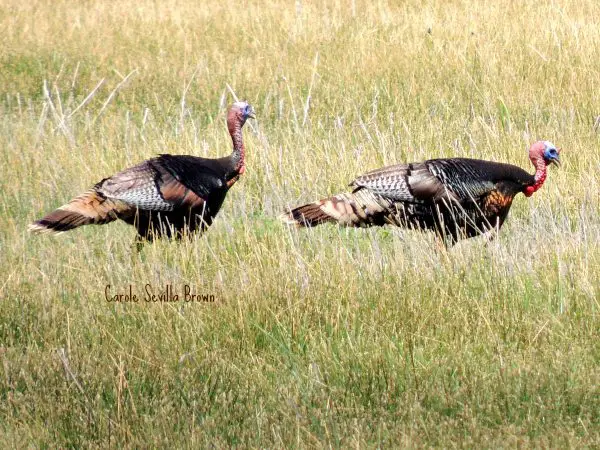
Wild Turkey females
The bare skin on a Wild Turkey’s face can range from red to blue to gray.
While the Wild Turkey appears to be ungainly and slow, they can actually run quite fast, up to 25 miles per hour. And they can fly at speeds up to 55 miles per hour.
The Wild Turkey has eyes placed toward the side of its head, which allows them to spot any predator attempting to sneak up on them. They are skittish and quite wary, so your chances of getting close to them are quite slim.
Wild Turkeys forage in flocks and eat mostly from the ground. They eat quite a variety of native plant nuts and berries, including:
Acorns from White Oak, Red Oak, and Black Oak
Hickory nuts
Beech nuts
Pecans
Virginia Creeper berries
Eastern Red Cedar fruits
Black Cherries
Poison Ivy berries
Dogwood fruits
Wild Turkeys also eat a wide variety of insects:
Grasshoppers
Beetles
Earthworms
Ants
Crickets
Spiders
You can attract Wild Turkeys to your garden most successfully if you live close to forested areas by planting some or all of the above plants. But these birds have also been known to scavenge under bird feeders as well.
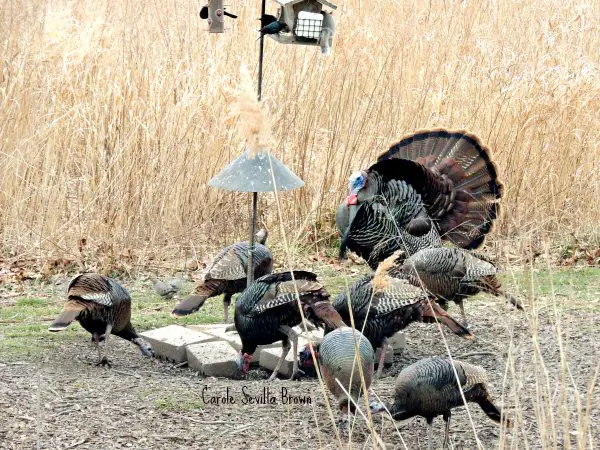
Wild Turkey Flock at Bird Feeder
Wild Turkeys roost high up in tree branches every night, so you’ll need to have nearby trees of some size if you’d like to see them near your wildlife garden.
So while you’re eating your Thanksgiving Turkey this year, give a nod to the majestic Wild Turkey too.
More From Ecosystem Gardening:
Submit your review | |

